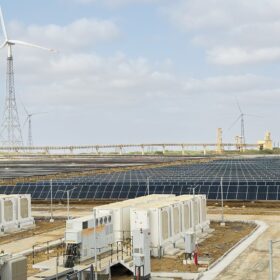In today’s energy-driven world, even a few minutes of downtime can cost companies millions and impact entire economies. Electricity powers everything from data centers and hospitals to manufacturing units and homes. Yet, despite technological progress, energy disruptions remain a pressing global issue, affecting productivity, trade, and national security.
Economic consequences of power outages
Power cuts reduce output, cause equipment damage, delay services, and disrupt entire value chains. According to the U.S. Department of Energy, power outages cost the American economy between $28 billion and $169 billion annually, with weather-related outages accounting for the bulk of the damage.
In March 2025, Heathrow Airport in London experienced a significant seven-hour power outage resulting from a substation fire. The disruption led to grounded flights, extensive delays affecting thousands of passengers, and an estimated financial loss of £40 million for British Airways within a single day. This incident serves as a compelling illustration of the critical vulnerability high-stakes sectors such as aviation face in the event of electrical grid failures.
A 2024 McKinsey report notes that developing countries lose up to 2% of GDP annually due to unreliable power infrastructure. This compounds inequality, widens development gaps, and restricts access to modern economic opportunities.
Geopolitical and global ripple effects
Energy is not merely a utility for lighting and basic operations; it also functions as a critical instrument of geopolitical influence. When access to power is disrupted or strategically weaponized during times of conflict, the economic consequences can be severe and far-reaching.
Consider the case of Ukraine. Since the onset of Russia’s invasion in 2022, Ukraine’s energy infrastructure has faced relentless assaults. By late 2024, the cumulative damage to the nation’s energy sector had exceeded $11.4 billion, with projected restoration costs estimated to surpass $30 billion. The consequences have included widespread rolling blackouts, suspension of industrial activity, and significant disruption to essential public services.
Germany offers another lens. In 2022, sanctions on Russian gas and retaliatory supply cuts created an energy crunch. By 2023, the German economy had shrunk by 0.3%, becoming the worst-performing major economy. Skyrocketing energy prices forced industries like steel and automotive manufacturing to scale down or relocate operations. On a broader level, these disruptions have triggered inflation and slowed trade across Europe. In a hyperconnected world, energy crises in one region now ripple across the globe. Trade slows, investor confidence dips, and fuel prices spike, hurting everyone from local farmers to multinational corporations.
Renewable energy transition: A double-edged sword?
The global shift toward renewables is essential for climate resilience, but it brings growing pains. Grid instability, lack of storage solutions, and mismatched infrastructure are creating new types of energy disruptions.
In May 2025, Spain and Portugal experienced massive power outages that halted factories and strained hospitals. The root cause? An unbalanced grid during a period of high renewable energy production and low demand. Without sufficient energy storage or backup capacity, the system simply buckled.
A similar situation unfolded in the Canary Islands, where a fault at a thermal power station plunged 30,000 residents into darkness. Emergency services were stretched thin, highlighting how even small disruptions can have outsized consequences in isolated or under-prepared regions.
These examples show that while renewable energy is vital, it’s only part of the solution. According to the International Energy Agency (IEA), global electricity demand will increase by 3.4% annually through 2026. To keep up, countries must not only generate more energy but also invest in smart grids, decentralization, and better forecasting tools.
Without proper planning, the transition to green energy could unintentionally usher in a new wave of blackouts and economic instability.
The path to resilience: What needs to change
So, how do we move from downtime to uptime and protect economies from future disruptions?
First, investment in grid modernization is critical. According to Deloitte’s 2024 Energy Outlook, the U.S. alone will need $2 trillion in grid investments by 2050 to meet its renewable energy goals. This includes underground cabling, weather-resistant transformers, and digitized grid monitoring systems.
Second, battery storage and diversified energy sourcing are no longer optional. Markets need the flexibility to shift between solar, wind, hydro, and thermal power during peak demand or unexpected outages. The U.K. recently announced a 500 MW battery storage expansion plan to address future demand spikes and blackout risks.
Third, regional and cross-border cooperation can soften the blow during disruptions. During the Iberian blackout, Portugal halted power imports from Spain, causing electricity prices to surge. Better integration and joint contingency planning could help prevent such bottlenecks in the future.
On the business side, companies must also take proactive steps. According to a 2023 survey by IBM, 56% of global executives are increasing investments in energy resilience, through measures like backup generators, smart HVAC systems, and cloud-based energy usage analytics.
Conclusion
Energy disruptions are more than power cuts, they are economic alarms. From flight cancellations and frozen supply chains to geopolitical conflict and renewable integration woes, the stakes are getting higher. As the world becomes more electrified and interconnected, downtime is no longer a temporary glitch, it is a systemic risk that can downgrade economies. The real cost of power loss is measured in GDP points, lost jobs, and compromised national security. To stay ahead, both governments and industries must view energy resilience as an investment, not an expense. With the right strategy, the future does not have to be fragile, it can be shock-proof.
The views and opinions expressed in this article are the author’s own, and do not necessarily reflect those held by pv magazine.
This content is protected by copyright and may not be reused. If you want to cooperate with us and would like to reuse some of our content, please contact: editors@pv-magazine.com.








By submitting this form you agree to pv magazine using your data for the purposes of publishing your comment.
Your personal data will only be disclosed or otherwise transmitted to third parties for the purposes of spam filtering or if this is necessary for technical maintenance of the website. Any other transfer to third parties will not take place unless this is justified on the basis of applicable data protection regulations or if pv magazine is legally obliged to do so.
You may revoke this consent at any time with effect for the future, in which case your personal data will be deleted immediately. Otherwise, your data will be deleted if pv magazine has processed your request or the purpose of data storage is fulfilled.
Further information on data privacy can be found in our Data Protection Policy.